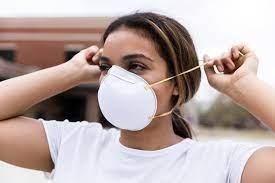A nurse is caring for a client.
Nurses' Notes
Day 1:
1300:
Client has a 2.5 cm (1 in) x 2.5 cm (1 in) stage 2 pressure injury to dorsal lateral aspect of left heal; wound bed red, moist, approximated edges; surrounding skin inflamed, red,, non-tender to palpation. Client reports pain score of 0 on 0 to 10 pain scale. Pedal pulse left foot 1+, unable to assess capillary refill due to toe fungus bilaterally, Pedal pulse right foot 2+. Wound care as prescribed; heel floated on pillow.
Medical History
Day 1:
Diabetes mellitus Hyperlipidemia
Labs
Day 1
Hct 38% (37% to 47%)
Hgb 13 (12 g/dL to 16 g/dL)
WBC 11,500/mm3 (5000 to 10,000/mm3)
Potassium 3.6 mEq/L (3.5 mEq/L to 5 mEq/L)
Pre-albumin level 10 mg/dL (15 to 36 mg/dL)
Albumin: 3.0 g/dL (3.5 to 5 g/dL)
Fingerstick blood glucose, fasting 186 mg/dL (74 to 106 mg/dL)
Select the 5 findings that can cause delayed wound healing.
Potassium level
Prealbumin level
History of diabetes mellitus
History of hyperlipidemia
Wound infection
Decreased pedal perfusion
Fasting blood glucose
Correct Answer : B,C,D,E,F
A. Potassium level is incorrect because it is within the normal range and does not affect wound healing directly.
B. Prealbumin level is correct because it is low, indicating malnutrition and poor protein intake, which are essential for tissue repair and immune function.
C. History of diabetes mellitus is correct because it causes impaired blood flow, increased risk of infection, and delayed inflammatory response, which all hinder wound healing.
D. History of hyperlipidemia is correct because it causes atherosclerosis and reduced blood supply to the affected area, which limits oxygen and nutrient delivery to the wound.
E. Wound infection is correct because it increases inflammation, tissue damage, and metabolic demands, which prolong the healing process and may lead to complications.
F. Decreased pedal perfusion is correct because it indicates poor circulation to the lower extremities, which impairs wound healing by reducing oxygen and nutrient delivery to
the wound.
G. Fasting blood glucose is incorrect because it is not a direct cause of delayed wound healing, but rather a reflection of the client's diabetes management. However, high blood glucose levels can impair wound healing by affecting blood flow, immune function, and collagen synthesis.
Nursing Test Bank
Naxlex Comprehensive Predictor Exams
Related Questions
Correct Answer is C
Explanation
A. Goggles are not typically necessary for droplet precautions unless there is a risk of splashing or spraying of respiratory secretions.
B. A gown is not specifically required for droplet precautions. However, if there is a risk of contamination from respiratory secretions, a gown may be used in addition to other precautions.
C. When setting up a meal tray for a client requiring droplet precautions, the nurse should wear a mask to protect against potential exposure to respiratory droplets.
D. Gloves are not typically required for setting up a meal tray under droplet precautions, as there is no direct contact with potentially contaminated surfaces.
Correct Answer is D
Explanation
A. Standing 1.8 m (6 feet) away from the client is not sufficient for airborne precautions.
Proper respiratory protection is required, such as an N95 mask.
B. Allowing the client to ambulate in the hall is not a specific action related to airborne precautions. If the client needs to leave their room, they should wear a mask to prevent the spread of airborne particles.
C. A positive-pressure airflow room is not typically required for airborne precautions.
However, ensuring proper ventilation in the room is important.
D. Airborne precautions are required for clients with illnesses that spread via small droplets or dust particles that can remain in the air for extended periods. This includes diseases like tuberculosis, chickenpox, and measles. The nurse should wear an N95 respirator mask to provide protection against inhaling these particles.

Whether you are a student looking to ace your exams or a practicing nurse seeking to enhance your expertise , our nursing education contents will empower you with the confidence and competence to make a difference in the lives of patients and become a respected leader in the healthcare field.
Visit Naxlex, invest in your future and unlock endless possibilities with our unparalleled nursing education contents today
Report Wrong Answer on the Current Question
Do you disagree with the answer? If yes, what is your expected answer? Explain.
Kindly be descriptive with the issue you are facing.
